Disclaimer: This blog post contains affiliate links. If you make a purchase through these links, I may earn a small commission at no additional cost to you. Learn More. Thank you for supporting our garden community.
How to Grow Broccoli the RIGHT Way (What People Get Wrong)
Broccoli is one of the most rewarding cool-season vegetables to grow, but it can be tricky if you don’t know what it needs. This guide will walk you through everything you need to know about how to grow broccoli, so you get crisp, flavourful heads every time.
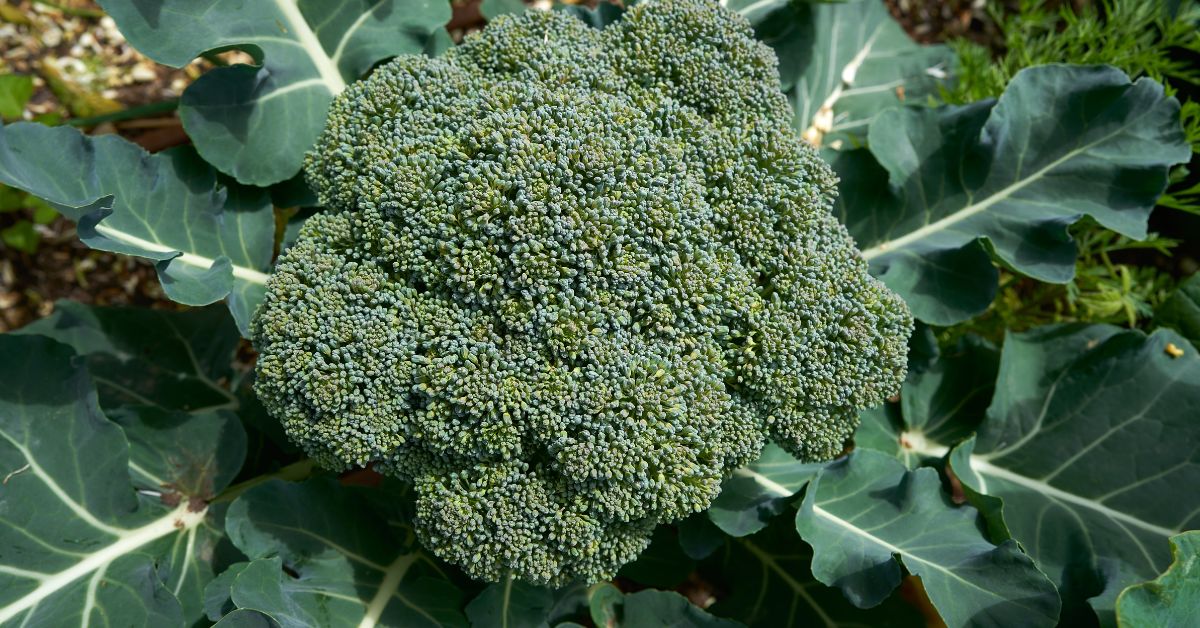
How to Grow Broccoli for Beginners
I’m not going to lie to you and say that broccoli is an easy plant to grow. Because it isn’t. It’s actually pretty challenging, especially for beginners, but even for experienced gardeners.
That means that there are lots of things to know about this crop and how to grow it.
So I’ll try to make it simple at straightforward for you to understand.
That being said, let’s get right into how to grow broccoli for beginners.
Products:
Save 10% on your first Burpee seed order using code BURPEE10
Organic insecticidal soap spray
Choosing the Right Broccoli Variety
All broccoli varieties can be divided into 2 main categories: heading and sprouting broccoli.
Heading broccoli, also known as Calabrese or Italian broccoli, produces one large head of broccoli per plant. It’s the typical variety that you get at the grocery store.
These varieties will form from the main stalk and the head will have all the florets stuck together.
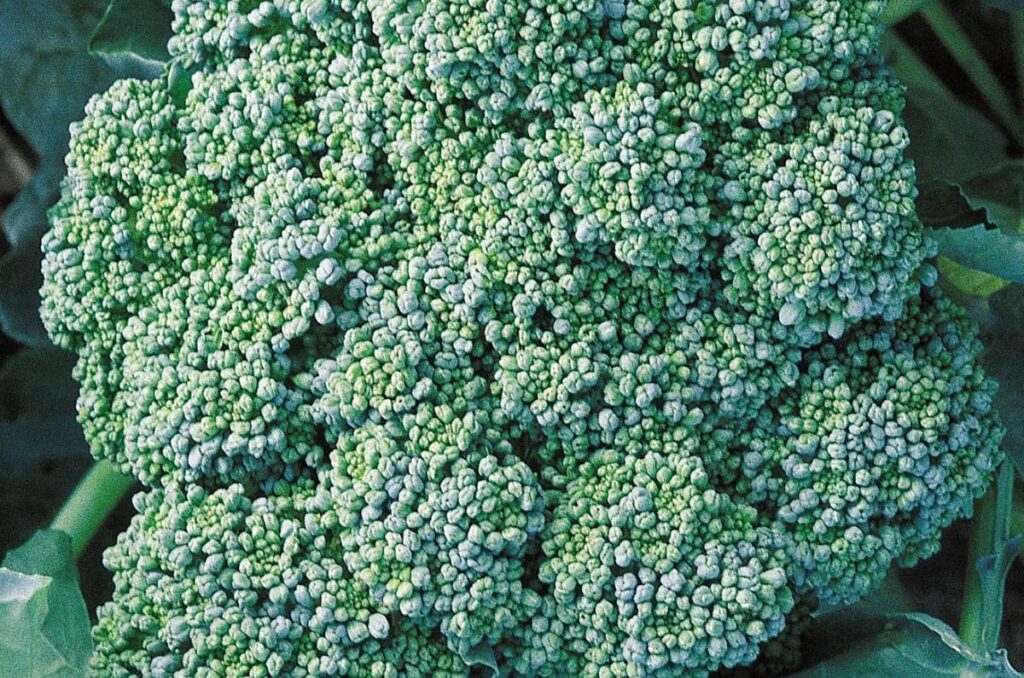
Here are some of my favourite heading broccoli varieties:
- Calabrese: The typical broccoli variety found everywhere, it was brought to North America by Italian immigrants. Matures in 60-90 days
- Romanesco: Another Italian variety grown for its spiralling florets. It’s mostly for novelty, because I’m not sure it offers any unique flavour. Matures in 75-100 days
- Marathon: This classic variety produces heavy heads that are grown in spring, fall, and winter. Matures in 70-75 days
Sprouting broccoli, on the other hand, produces many small heads or sprouts. They won’t form one single head of broccoli.
Sprouting varieties will also form from the main stem, but also from the leaf nodes. Additionally, the florets are not stuck together, they’re more separated.
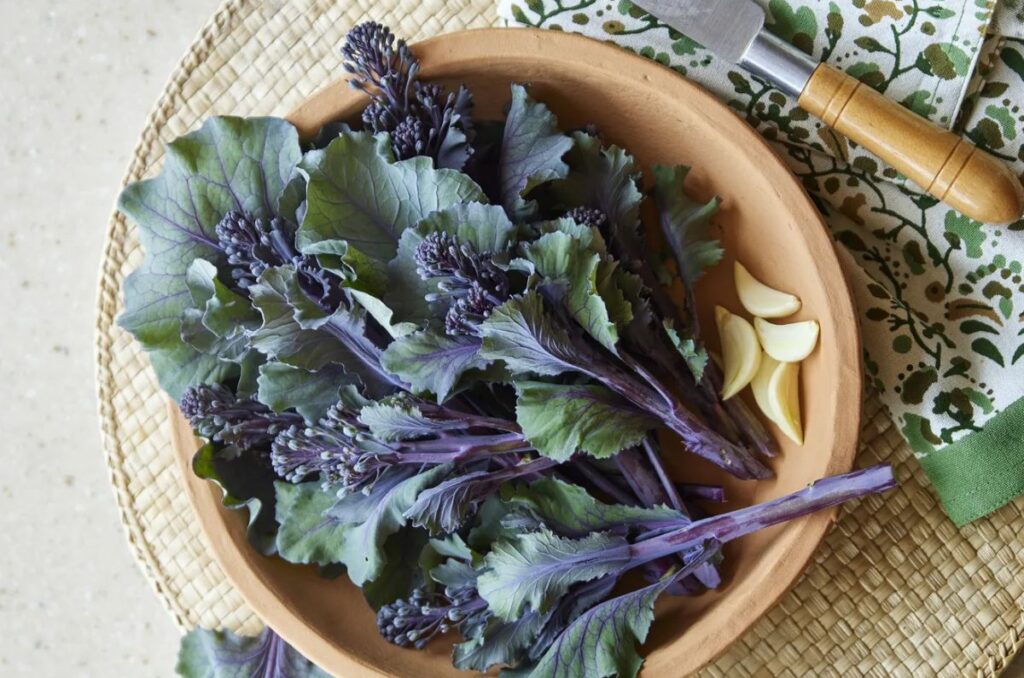
Here are some of my favourite sprouting broccoli varieties:
- Purple Sprouting: The classic sprouting broccoli variety known for its purple florets. It’s extremely cold hardy as well. Matures in 120-200 days
- ButterStem: This green sprouting variety produces small florets on tender, sweet, and buttery stems. Matures in 85 days
- Purplelicious: Another purple variety that produces fully coloured florets, stem and buds. It’s more tender and sweet than others. Matures in 70 days
If you’re just starting out with growing broccoli, I have to say that sprouting broccoli is much easier. Like way easier.
Because it doesn’t form a big head, it’ll give you a harvest no matter what. Heading broccoli really only gives a good harvest if you get the main head. Or else, there really isn’t much.
Sprouting broccoli completely avoids this issue by giving you smaller, more manageable heads that are easier to grow.
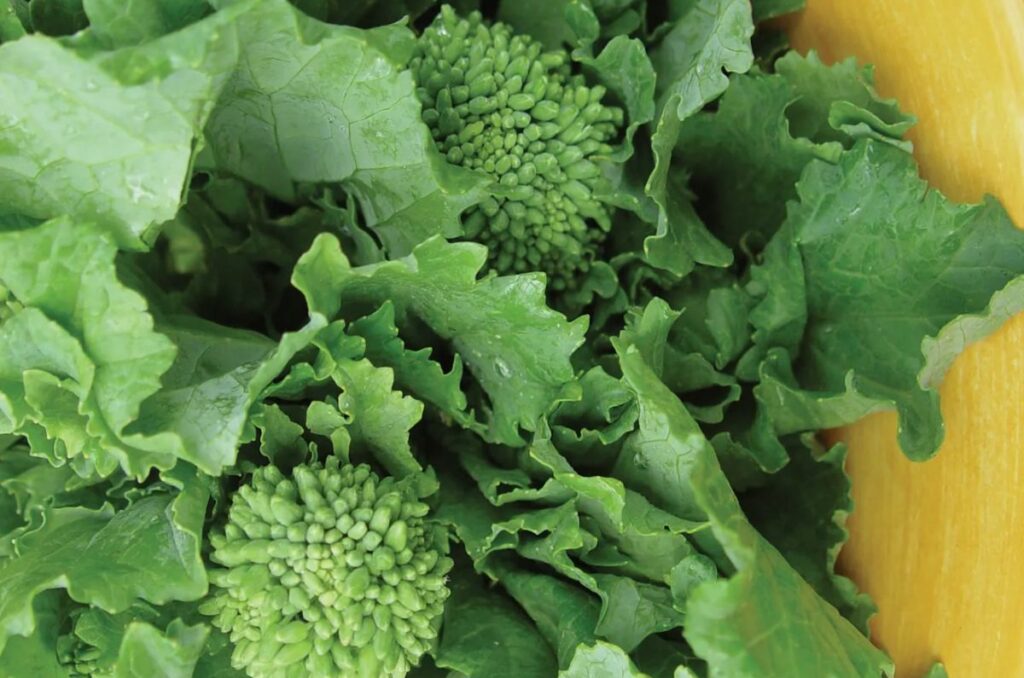
Is Broccoli Rabe Actually Broccoli
If you really look into it, you’ll realize that there are other vegetable varieties that have the word “broccoli” in their name.
The best example is broccoli rabe, also known as rapini.
This is an Italian broccoli-like vegetable grown for its stems, leaves, and small flower buds. The flower buds look very similar to regular broccoli.
However, if you’ve ever had it, you know that it does not taste like broccoli. Instead, rapini is more of a bitter green.
And it’s actually the same exact species as the turnip, not the typical brassica crops.
When to Grow Broccoli
Nothing else in this article matters if you don’t get this part right. It doesn’t matter what else you do if you don’t grow broccoli at the right time.
This is also the most common mistake gardeners make when trying to grow broccoli.
Broccoli is very specific in timing, mainly because of the weather and sunlight conditions.
This is why we need to time broccoli planting correctly. They prefer temperatures of around 10-22°C (50-72°F).
Spring and fall are by far the best times to grow broccoli. Here in zone 5b, getting my broccoli out before the last frost date in the spring is ideal, allowing them to grow during the cool season and produce before it gets too hot.
But also planting broccoli in mid summer (around mid-July to August) allows them to mature as temperatures drop in the fall.
If you live in a warmer zone, then you can actually grow broccoli throughout the winter. You would plant them around November and then they’ll mature over the winter.
But for most people, planting in early spring and mid to late-summer is ideal for growing perfect broccoli.
Will Broccoli Grow in Summer?
Growing broccoli in summer might be possible, but it’s really difficult.
You see, broccoli can’t handle heat very well. It doesn’t grow well, it produces very little, and it gets really bitter when it’s too hot.
Some gardeners can avoid this with summer broccoli if they use a shade cloth, but it’s almost guaranteed not to go well.
So just stick with spring and fall for growing broccoli.
Sunlight Requirements for Broccoli
When you’re growing broccoli in spring and fall, then you have to give them full sun. Because it’s cold at these times, giving them as much sunlight as possible will increase their growth.
If, for some reason, you’re growing broccoli in the summer, then giving them shade during the hottest parts of the day can help them.
Typically around 12-3 pm in the summer it gets really hot. So covering them at that time can prevent them from becoming bitter.
Can Broccoli Grow in Shade?
If you’re growing at the recommended times (spring and fall), then the plants need full sun.
When exposed to too much shade, broccoli plants will grow really slowly and won’t produce big heads of broccoli.
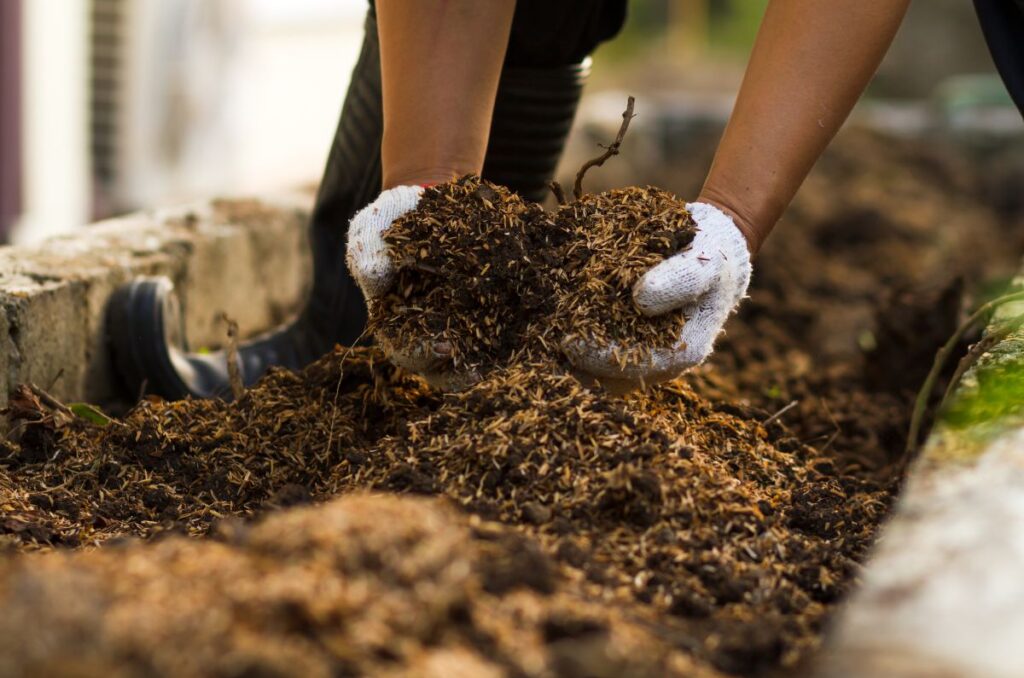
Preparing the Soil for Growing Broccoli
Broccoli can actually grow really well in lots of different types of soil.
What’s particularly surprising is that clay soil can actually be good for growing broccoli. Clay soil holds onto more nutrients and water than other soil types, so it can be valuable.
But having too much clay is always going to be a bad thing. Start by adding about 30-40% of the volume of soil in well-rotted compost or manure.
Organic matter helps to break up large clumps of clay, but it also adds fertility for broccoli. Broccoli plants are heavy feeders, so they’re going to need it.
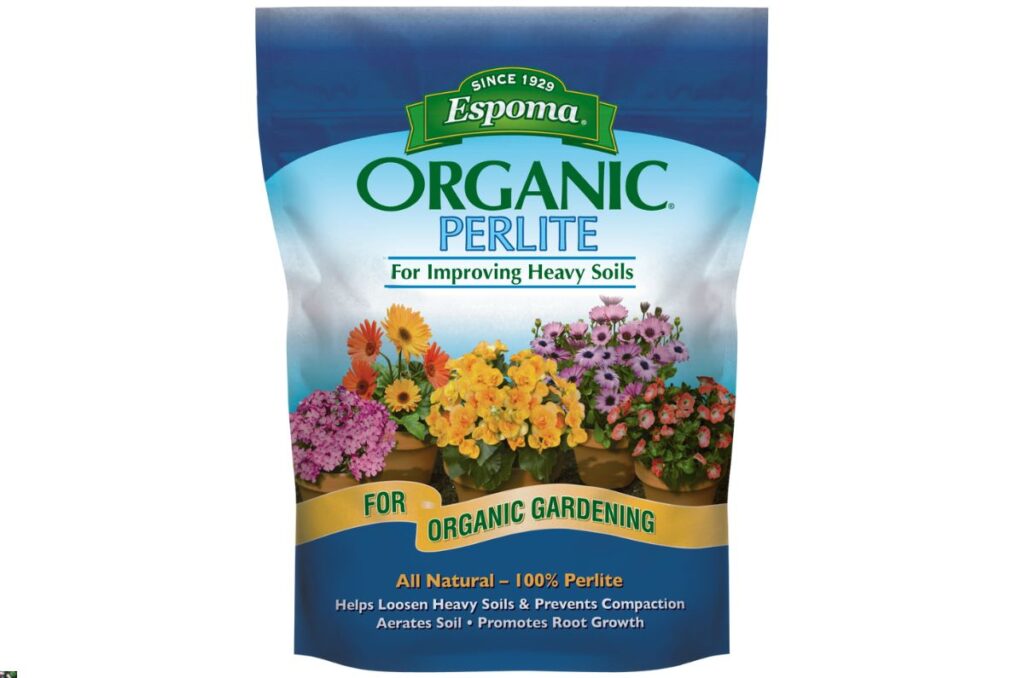
I also like to add some perlite, which helps with drainage and aeration.
If you’re starting with really sandy soil, then add compost as well. Compost generally helps with most soil-related problems. 30-40% of the total soil volume is an ideal ratio.
This will help your sandy soil retain more moisture.
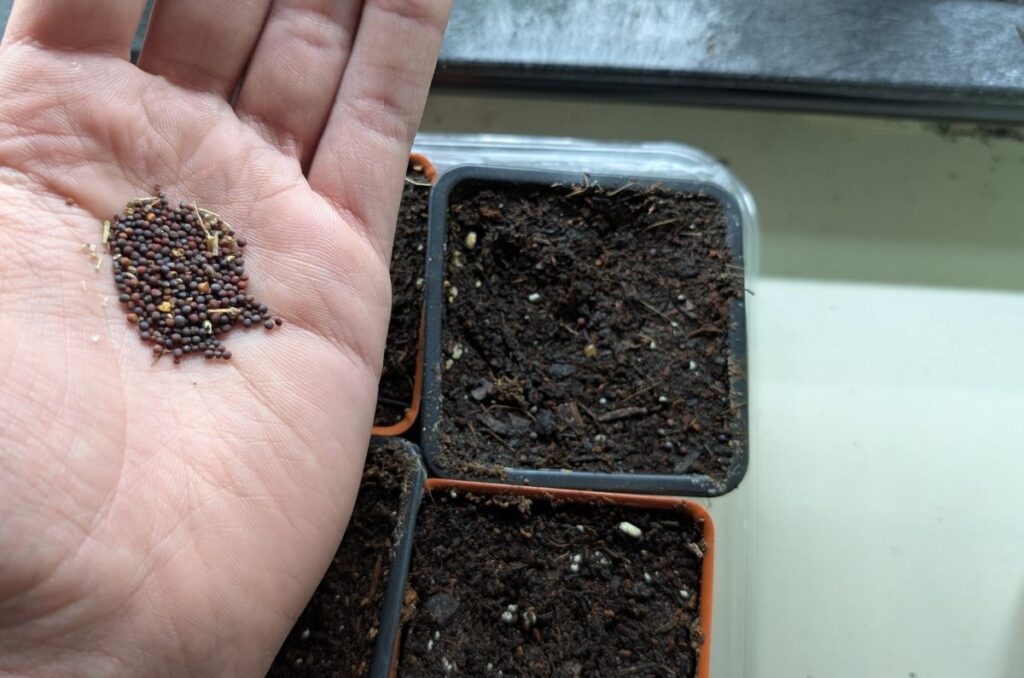
Starting Broccoli Seeds Indoors
Starting broccoli seeds indoors is far better than direct-sowing them. It gives them a head start and the ideal conditions to grow well before they go outside.
Normally we would consider frost dates when starting plants indoors, but since broccoli can be planted out before the last frost date, it really doesn’t matter.
However, you should sow them about 4-6 weeks before they go outside. This gives them enough time to grow large, with thick stems and perfect leaves.
Let’s say, for example, that I want to transplant my broccoli seedlings on March 31. Then I’d have to go back 4-6 weeks before that date to know when to sow them. That would bring me to about the last week of February.
So I’d start them around that time and plant them outside at the end of March.
You don’t need a heat mat or anything else like that to help with germination. Broccoli seeds are generally pretty quick and easy to germinate; they only take about 3 days!
You don’t have to soak them; I don’t know if anybody does that, but just don’t do it, it’s not worth it.
Once the seeds sprout, then make sure to put them under strong LED grow lights for about 12-14 hours every day.
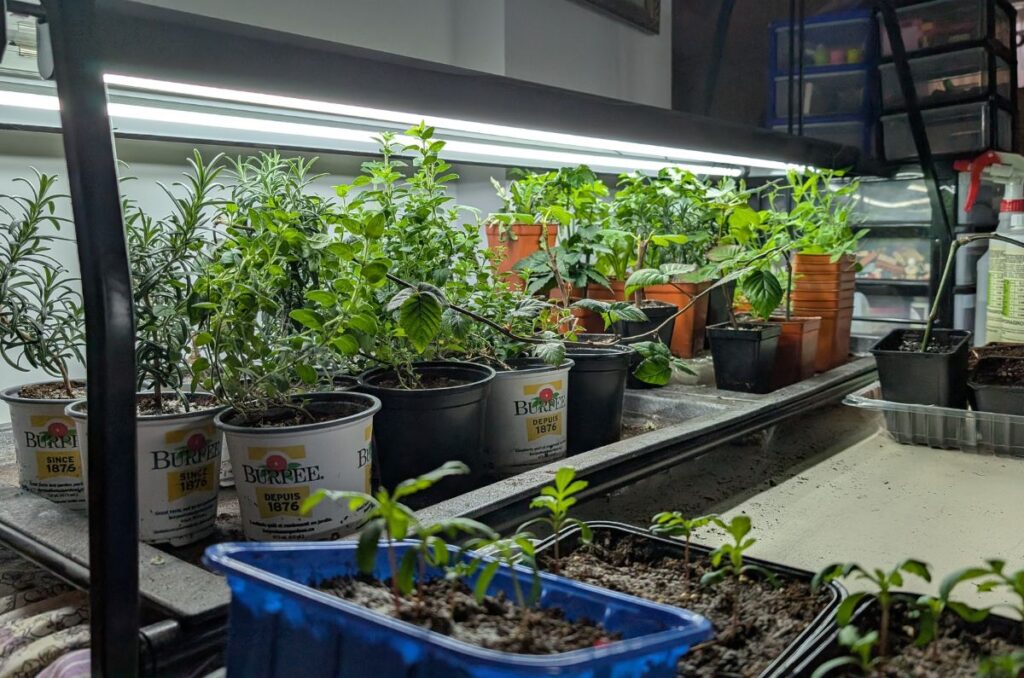
I like Lee Valley’s LED grow light stand. I’m not an affiliate for their brand, I just really like their products.
If you don’t have grow lights, then putting them by a sunny window can work as well.
Learn more: Is Window Light Enough for Seedlings?
Like I said, broccoli plants are heavy feeders, so make sure to fertilize the seedlings as well. Once they have their first true leaves, then you can start fertilizing every time you water.
I really like the organic fertilizers from HyrdaGarden. Again, I’m not an affiliate for their brand, I just really like their products.
If you’ve seen my YouTube videos lately, then you know that I use their fertilizers all the time.
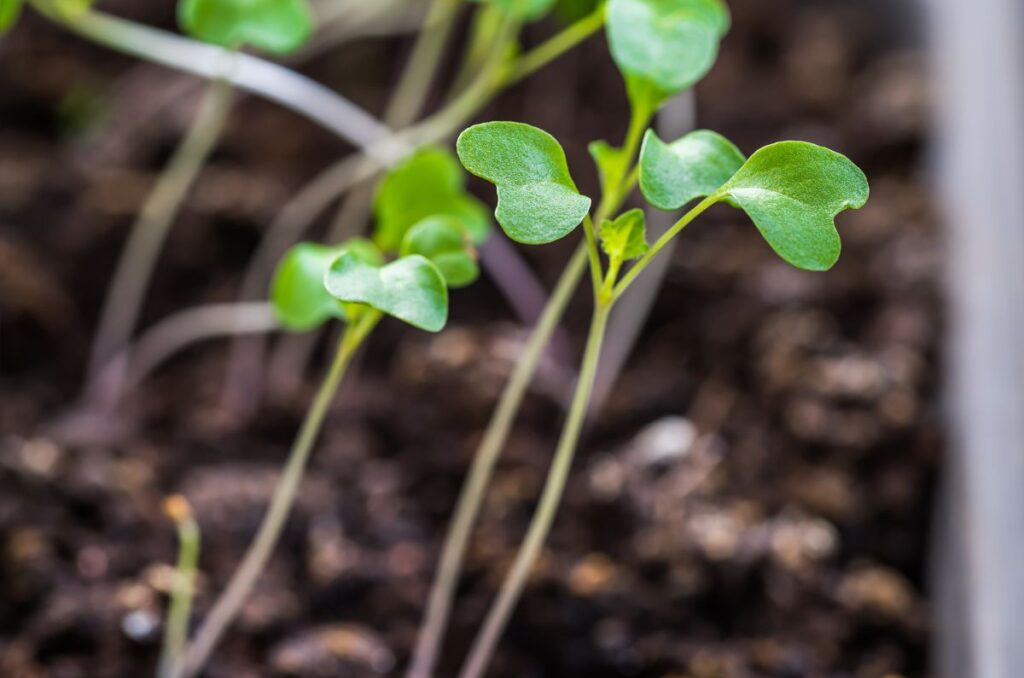
How to Fix Leggy Broccoli Seedlings
For some reason, my broccoli seedlings always come out leggy. Always!
It doesn’t matter how close I keep my grow lights.
I don’t know why this happens, or if I’m the only one, but it’s pretty frustrating. I’ve learned to deal with it. It still gets on my nerves to this day.
The best way that I’ve found to prevent leggy seedlings with broccoli is just to plant the seeds deeper.
By planting them just a little bit deeper, it gives the stem more space to stretch out in the soil instead of above ground.
It doesn’t do much, but it’s something, right?
It won’t affect their germination rates; they germinate almost anywhere.
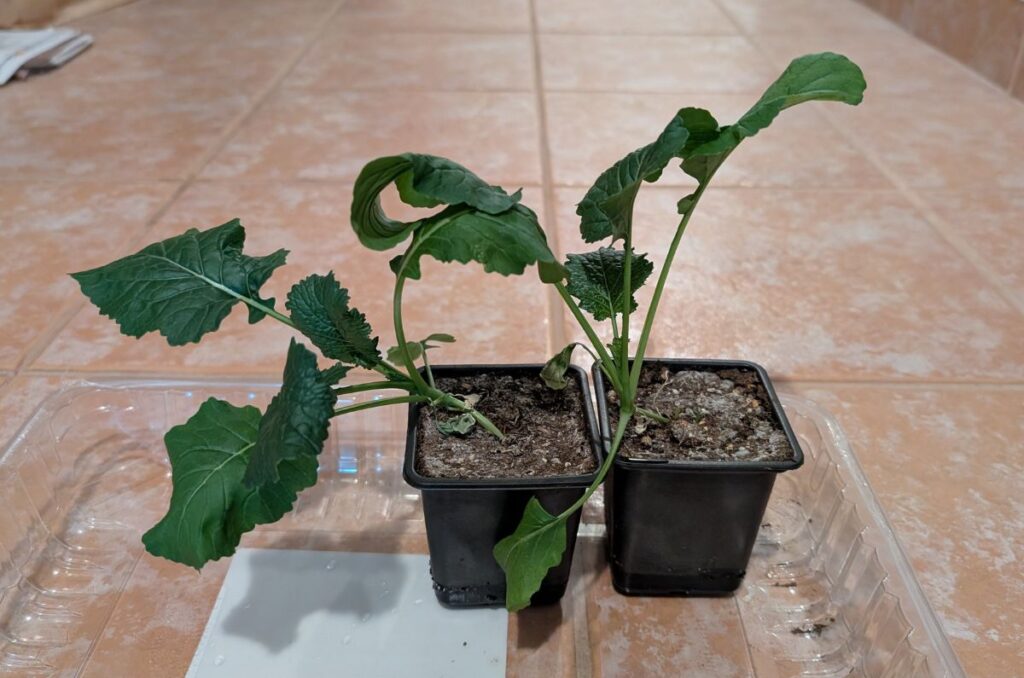
Transplanting Broccoli Seedlings
Your broccoli seedlings are ready to be transplanted when they’re about 6-8 inches tall. It takes roughly 4-6 weeks for them to reach this height.
Don’t let them get too large. Broccoli seedlings especially don’t like to be root-bound.
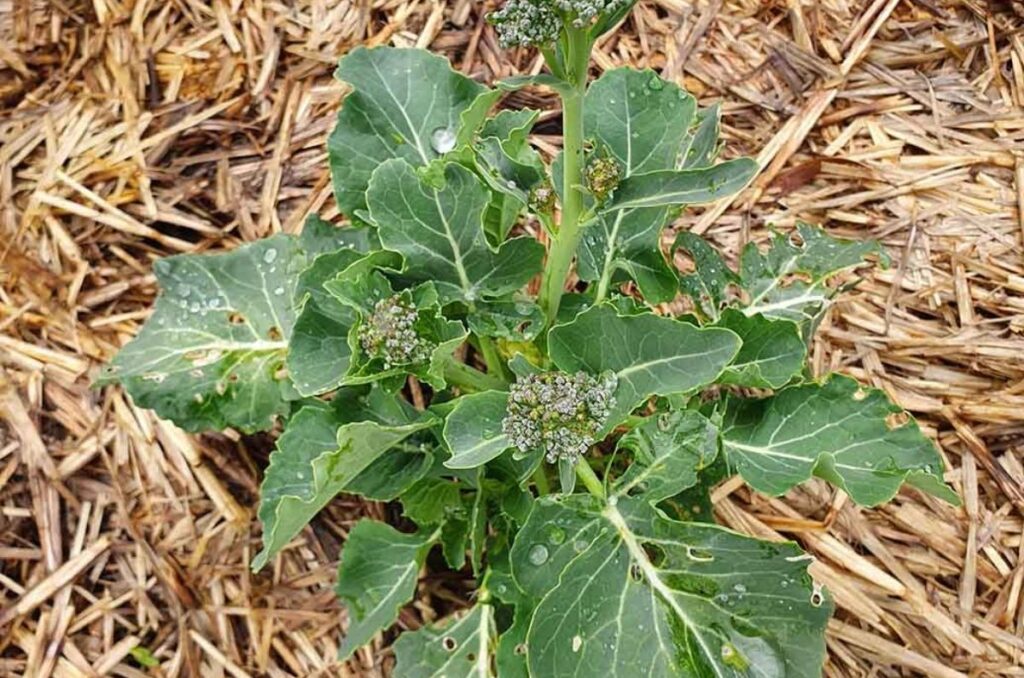
When they get too big for their pots, they think that they’re actually older than they are. This makes them send out a premature flower stem, which is the broccoli floret.
And this premature floret won’t size up, obviously, so that’s all you’re going to get for the season if you leave them root-bound.
So make sure not to let them get too large before transplanting.
If you did get some leggy seedlings, you can plant them a little bit deeper to cover the stem. Broccoli plants have actually been seen to grow roots along their stems.
Space each plant about 18-24 inches apart. This allows for perfectly-sized heads on each broccoli plant. If they’re planted too close, then the heads might be smaller.
Watering Broccoli Plants
Broccoli plants are pretty big. The leaves are big, the stem is thick, and the florets are quite large. This means that they need a lot of water to sustain their growth.
And they generally can’t tolerate dry conditions, especially when it gets really hot in the summer.
Keep the soil evenly moist and never let it dry out.
If you see the leaves drooping, then it’s probably too hot. This is especially common with container-grown broccoli.
First of all, you probably shouldn’t be growing broccoli when it’s hot.
Secondly, give them water.
Thirdly, you should cover them with some shade cloth during the hottest parts of the day (12-3 pm).
This will help your broccoli plants stay happy with their moisture requirements.
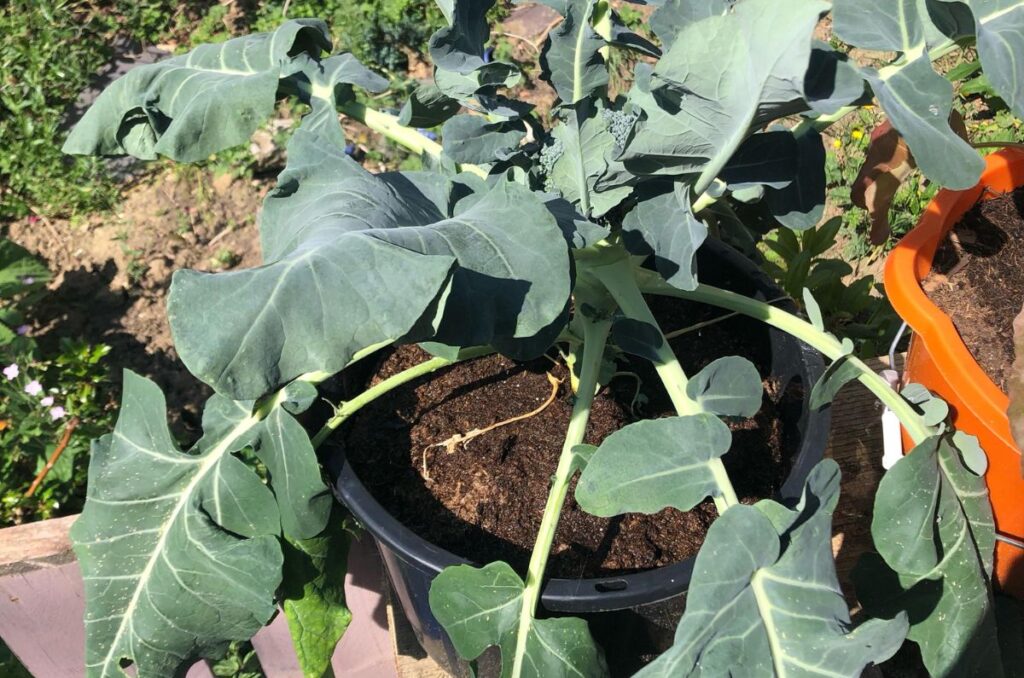
Should You Water Broccoli Leaves?
Brassica plants are the only vegetables where I would recommend watering the leaves.
It might sound weird, especially because I’ve said many times in the past not to water the leaves of your plants.
And it’s true, splashing water on the leaves of your plants can increase the spread of diseases.
However, it might be a risk you’re willing to take if you hear the main benefit.
Water is generally colder than the air surrounding it. And if you use hose water from your house, then it’s almost always going to be cold water. Like really cold.
So if you give your broccoli plants a quick spray of water of the leaves during the day, then they too will cool down.
The real problems only happen if the leaves are prolongedly exposed to moisture and humidity. But a quick spray of cold water during the day won’t do much harm.
I’m willing to take the risk to keep my broccoli plants cool and happy.

Fertilizing Broccoli Plants
Broccoli plants are heavy feeders, meaning they need a lot of nutrients to grow properly.
They especially need lots of nitrogen early in their lives. So add a nice dose of blood meal into the planting hole when transplanting.
If you put enough fertilizer, then you usually don’t have to fertilize them as they grow. If there’s enough compost or manure, then that’ll provide a lot of nutrients for the plants as well.
It’s not like tomatoes where you have to get the right NPK ratio or anything like that. Just some good organic nitrogen fertilizer will do the trick.
Mulching Broccoli Plants
Mulching is absolutely necessary for growing beautiful heads of broccoli.
It helps to conserve moisture and cool down the soil, which will help your plants thrive.
I like using shredded leaves and grass clippings because they’re free, but any mulch works fine. Straw is especially good because its light colour helps to reflect more sunlight.
Use mulch for your broccoli in raised beds, in-ground, and in containers. Add a 2 inch layer and keep it about an inch away from the stems of the plants. This helps to prevent it from rotting.
Pruning Broccoli Plants
Broccoli plants don’t really need to be pruned. The plants are pretty compact and don’t produce long vines like cucumbers.
However, some pruning needs to be done as the plants get older.
Older leaves will naturally start to get close to the ground or even touch the soil. These need to be removed as soon as possible to prevent diseases from spreading.
Once you see them getting close to the ground, don’t be afraid to prune them off.
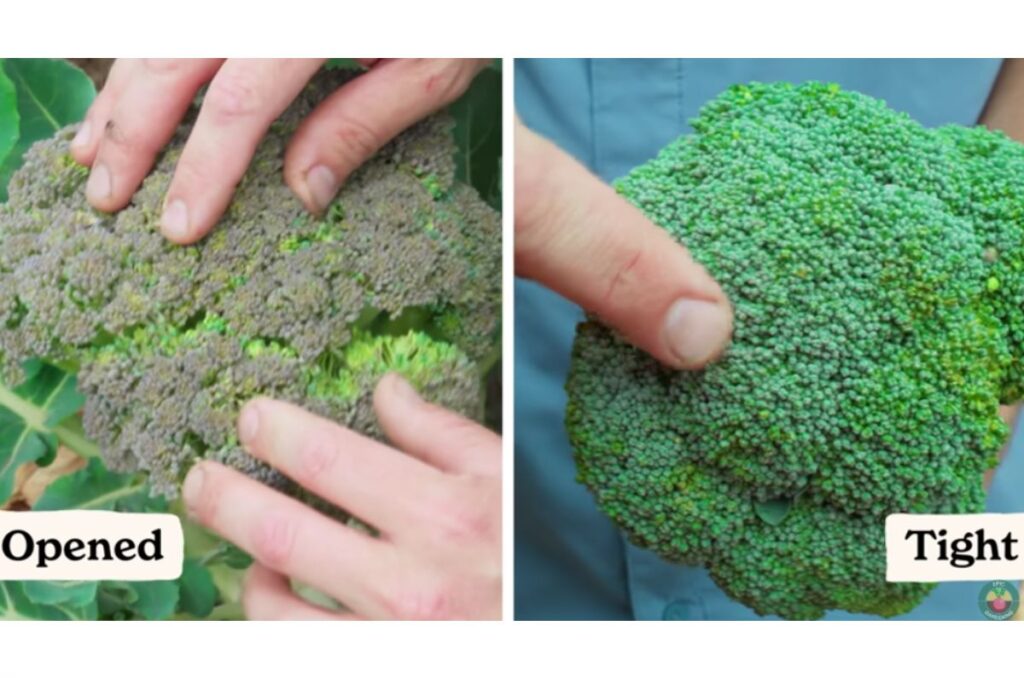
Harvesting Broccoli
Broccoli is ready to harvest when the central head is full and firm. It should also be its full size, as it says on the seed packet.
Usually, the heads are about 10-20 cm (4-8 inches) long and they weigh about 250 g (9 oz). But the seed packet will tell you for each variety you’re growing.
The buds on the head should be really tight; they shouldn’t be separating.
If they’re starting to separate, then you waited too long. But you can still harvest and eat it at this time.
And don’t harvest too early either. I know it’s exciting to grow broccoli, but if you harvest just a little head the size of my finger, then there’s no point growing it.
Let it get to its full size without getting too old.
Then you have to cut the entire head off at once.
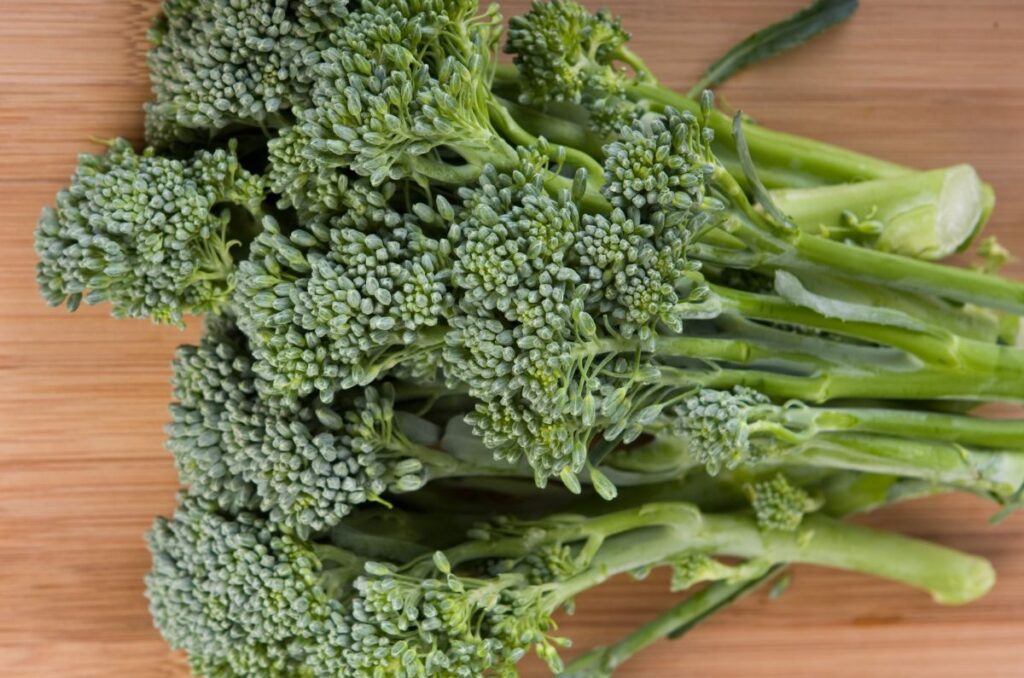
Will Broccoli Grow Back After Cutting?
Make sure not to take off too much of the stem when harvesting, as side shoots will continue to grow.
Side shoots will develop between the leaf nodes and the main stem. They’re literally mini broccoli heads and will continue to grow after you harvest the main head.
The side shoots won’t grow another full head of broccoli, but they’re kind of like broccolini.
Once you pick them, then more side shoots will grow after that. Altogether, you’ll get the main head plus at least another head worth of side shoots. You’re basically getting 2 broccoli heads per plant.
So don’t pull the plants out once you harvest the main head. Let the side shoots grow and harvest them for more food.
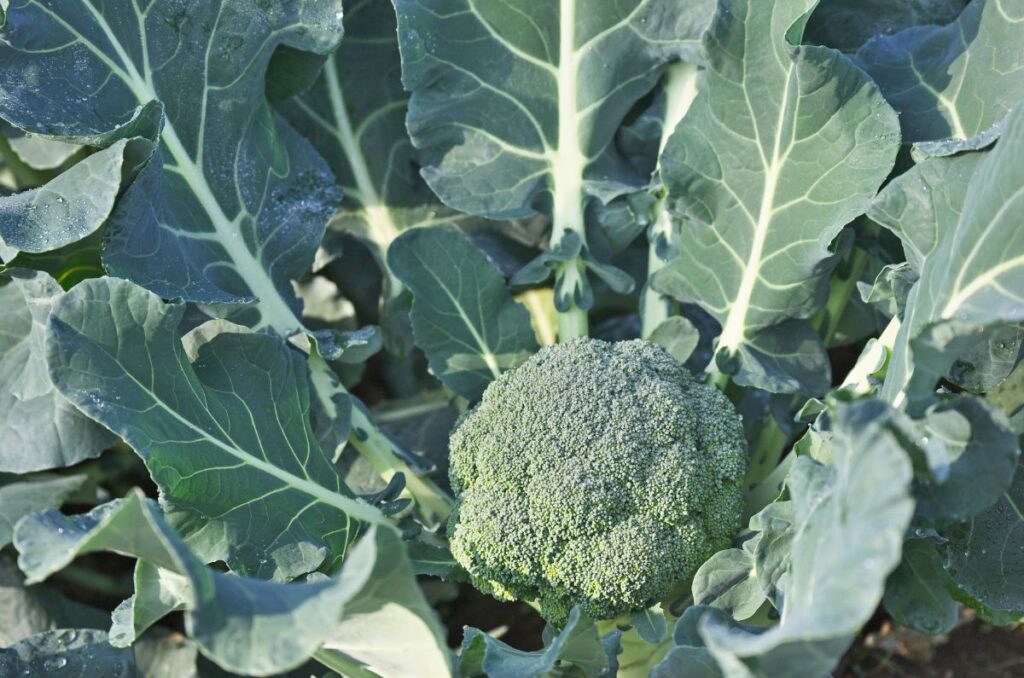
The leaves are also edible. They kind of taste like kale, but maybe a little bit tougher.
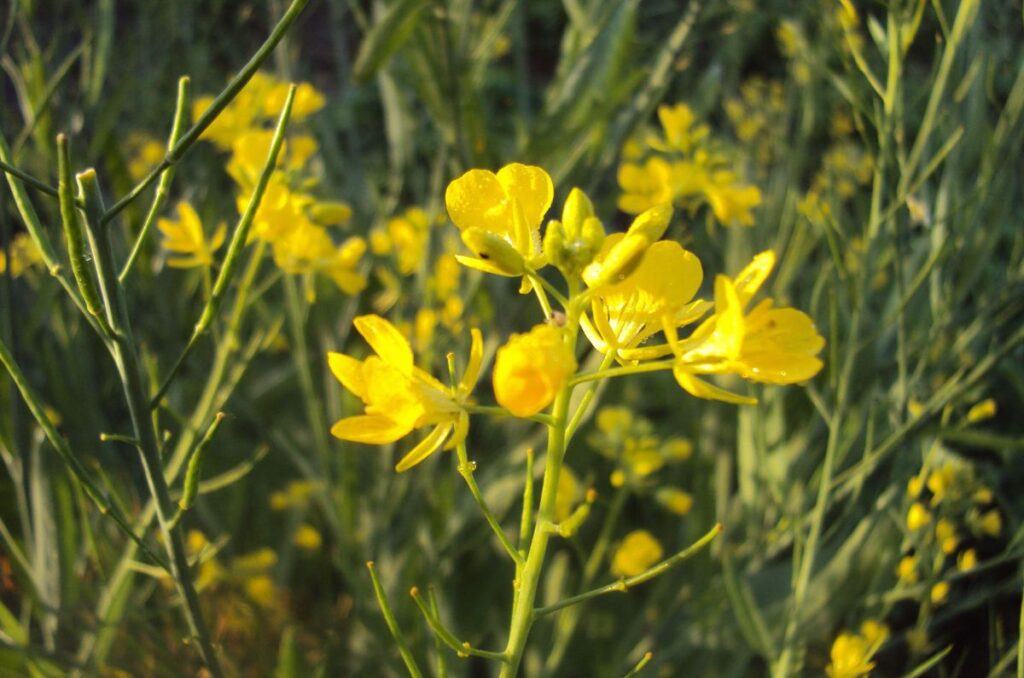
How do You Keep Broccoli from Bolting?
Bolting is when a plant produces flowers and seeds prematurely in its life. It’s mainly caused by stress because the plant thinks that it won’t live any longer, so it has to get the next generation out.
It’s also very common with broccoli plants.
Broccoli bolting is caused by heat and water stress.
The best way to prevent this is to keep your soil moist at all times and make sure you’re growing broccoli during the spring and fall, when the weather is still mild.
The summer heat and drought is the problem, so you just have to avoid this time.
Additionally, waiting too long to harvest broccoli will cause them to bolt. Harvest them at the right time and don’t let the flower buds separate and open.
Common Broccoli Growing Problems
| Problem | Solution |
| Yellowing leaves | This is usually caused by a nutrient deficiency. Make sure you’re using lots of nitrogen-rich fertilizer early in the plant’s life and there’s lots of compost in the soil before planting. |
| Small or no heads | Small broccoli heads are normally caused by heat stress or overcrowding. Make sure to space your plants properly (18-24 inches apart) and grow them in spring or fall, during the cool season. |
| Bitter taste | Bitter broccoli is caused by heat and water stress. Again, grow them in the cool season and make sure to keep the plants well-watered. |
If you pay attention to the care requirements of broccoli plants, then you shouldn’t have any of these problems.
Common Broccoli Pests
There are a few common broccoli pests that can absolutely destroy your crop if you don’t tale proper action.
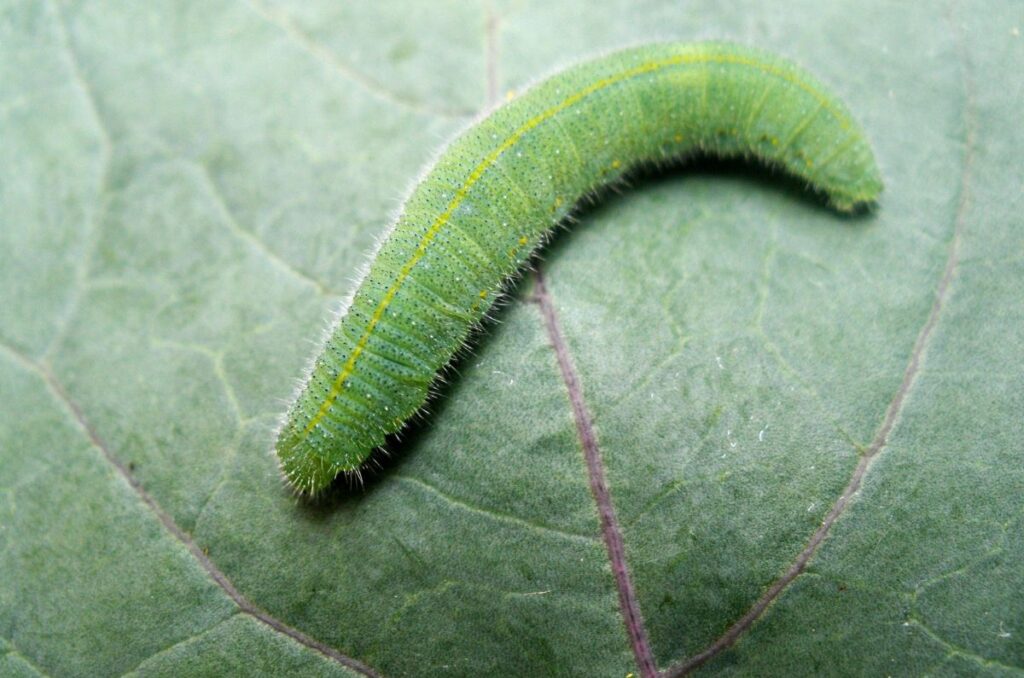
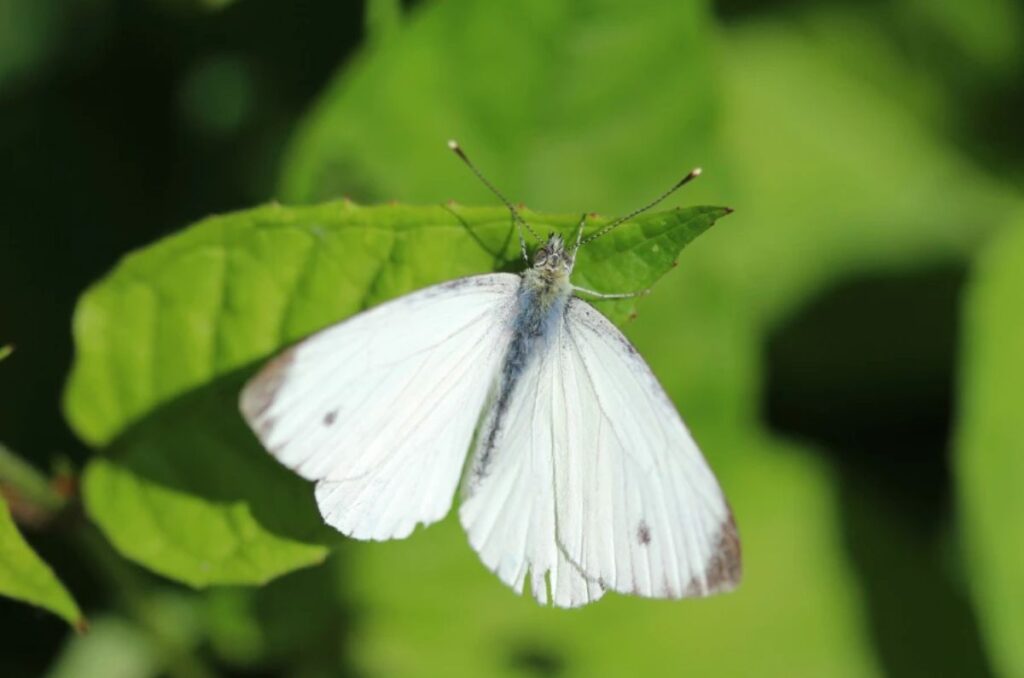
Cabbage Moths
The biggest broccoli pest is by far the cabbage moth. They’re white moths with a small black dot on their wings. Once you see one, you’ll never forget the horror they cause.
They lay their eggs on the leaves of your broccoli and then the caterpillars emerge. These are called cabbage worms. They’ll eat huge sections out of all the leaves.
The worst part is that the worms are green, so they’re really hard to see on the leaves.
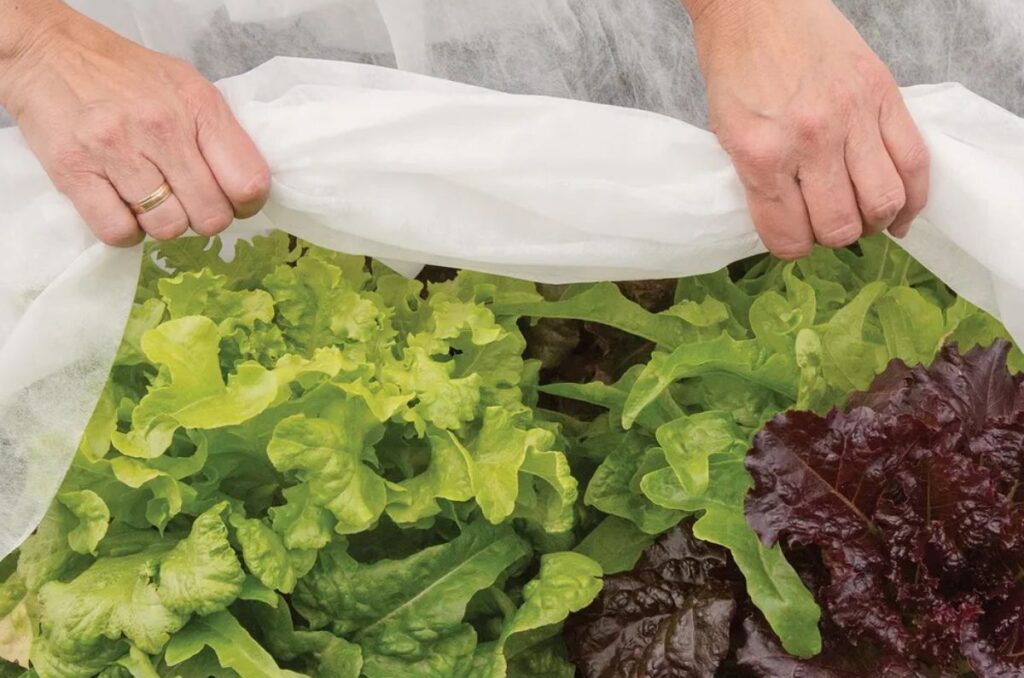
The best way to prevent cabbage moths is just to keep your plants covered with a floating row cover. From when you transplant to when you harvest, just keep them covered.
This prevents the moths from flying in and laying their eggs.
If you already have cabbage moths around your plants and you want to get rid of them, then you have to inspect every leaf.
Look for very tiny yellow or white eggs on the undersides of the leaves. Squish them with zero mercy and don’t ever feel bad about it.
If you find the caterpillars, then either pick them off manually, or, as I like to do it, cut them in half with your pruners and watch them suffer.
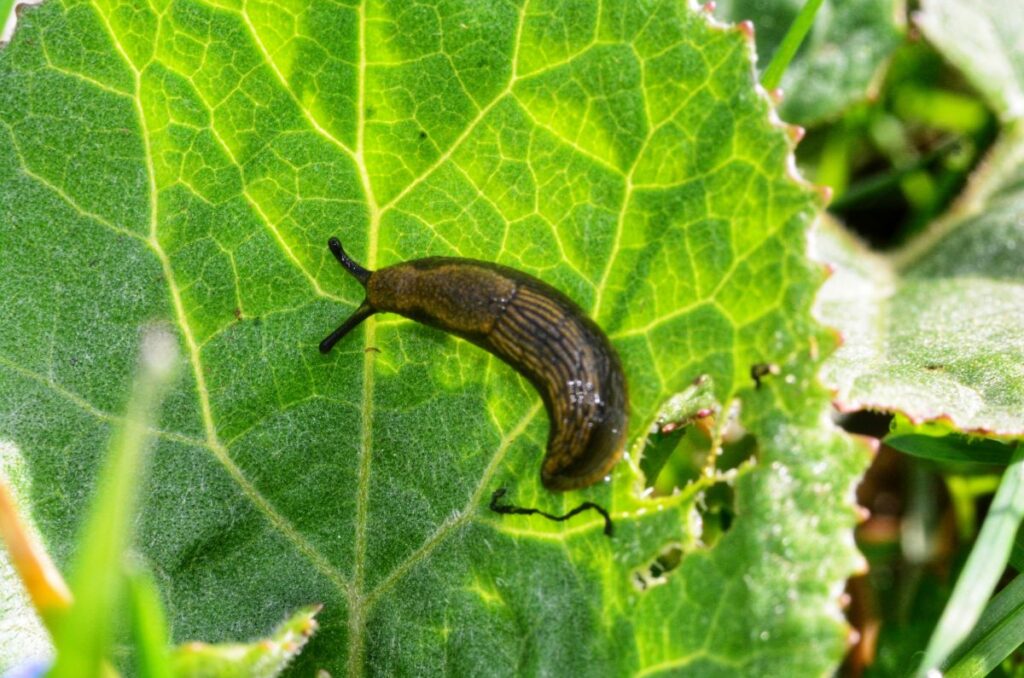
Slugs
Slugs are another common broccoli pest.
They mostly attack young plants because they’re sweeter and more tender, and because they’re easier for slugs to access.
They like to crawl from the moist soil onto the leaves and they’ll chew huge holes in the leaves. If left unchecked, then they will eat all of your broccoli leaves just like the cabbage worms.
Again, the best way to prevent them is to cover your plants and never let the slugs touch them. But if you already have slugs, then you have to check your plants.
They like to come out when it’s really moist and humid. This is usually around late evening and early morning, but also when it rains.
Go outside at these times and check the leaves of your broccoli plants. Manually pick off the slugs, or if that’s too gross, then just cut them in half with your pruners. It’s truly beautiful.
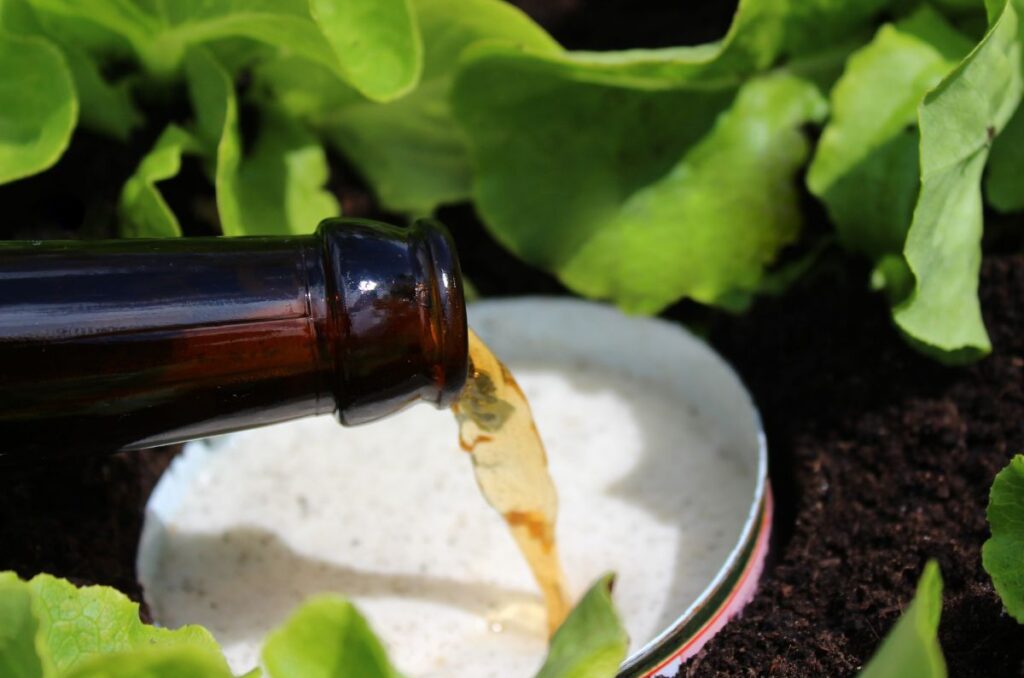
To prevent them from coming back, you can also try putting out a beer trap.
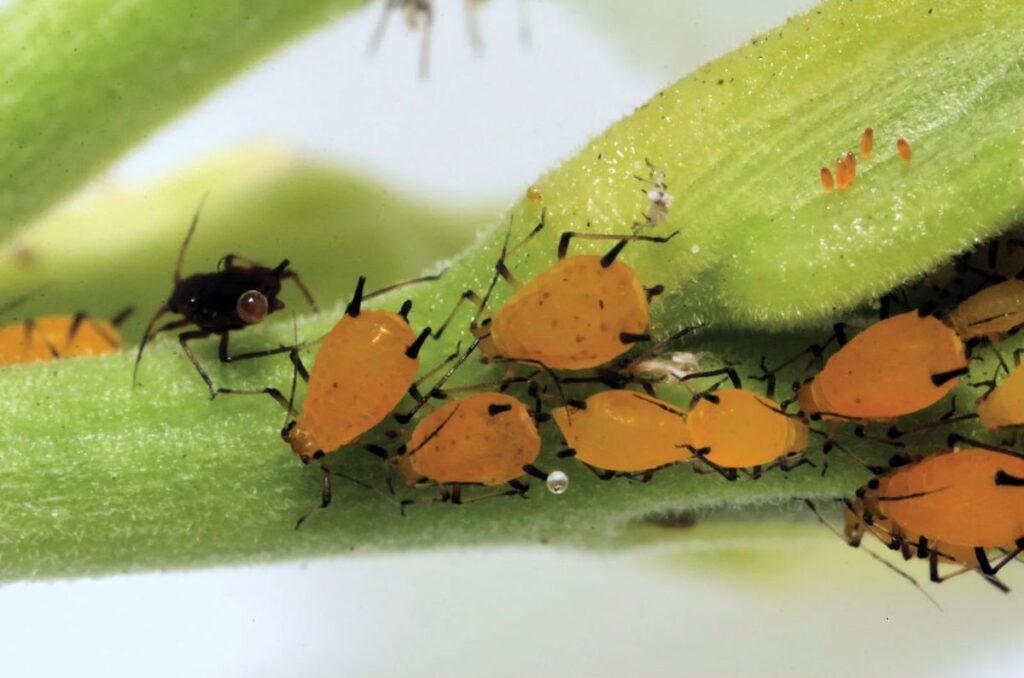
Aphids
Aphids appear on the undersides of the leaves and around the growing tips.
They suck on the juice inside the plant, depriving it of all of its water and nutrients.
The best way to get rid of them is to use an organic insecticidal soap spray. Spray the soap anywhere you see aphids. Spray your plants everyday until every aphid is gone.
You see, aphids can reproduce asexually, meaning just one single aphid can reproduce an entire colony. So it’s important to be diligent and check for aphids everywhere on your plants.
Learn more: How to Get Rid of Aphids Naturally
Frequently Asked Questions
Most broccoli varieties take about 50-100 days to mature from seed. It usually takes longer if the plants don’t get enough sun or if it’s really cold.
Each broccoli plant will only produce one head of broccoli. However, once you harvest the head, leave the plant in the ground and it will produce side shoots that are kind of like broccolini.
Yes, broccoli leaves are edible and have a taste similar to kale. They might be a little bit more tough, but they’re still good to use in soups and stews and stuff like that.
Broccoli is not a vining plant like grapes, and it doesn’t need a trellis or support system to grow properly. That being said, there’s no reason to grow broccoli vertically; it’s a compact plant.
Even More Gardening Ideas
Here are a few more posts to get the ball rolling in your garden!
- How to Grow Cucumbers from Seed to Harvest
- 5 Easy Tomato Trellis Ideas for ANY Garden
- Compost vs. Manure: Which One’s Better for Your Garden?
If you liked this article, make sure to share it with your friends and family members who are also looking to sharpen their gardening skills. Also, consider signing up for our email newsletter; don’t worry, we won’t send you spam, just fresh gardening ideas every week!
If you want to learn more about vegetable gardening, make sure to check out what I’m doing on Facebook, YouTube, and Pinterest.
Pin this post for later:
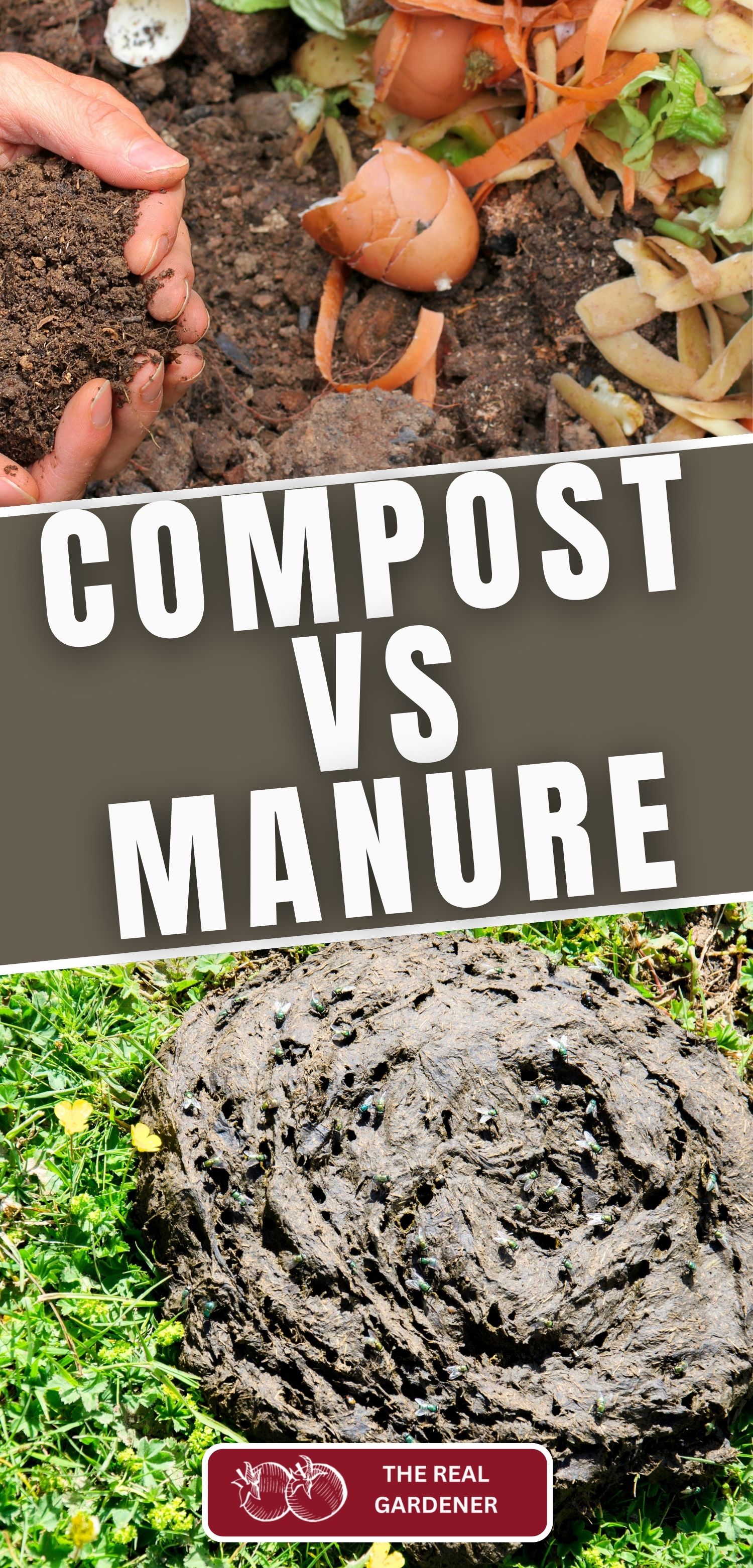
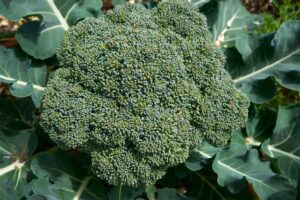
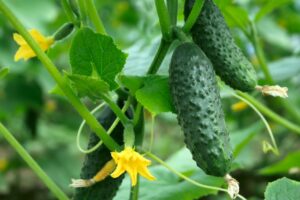


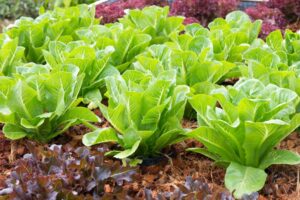

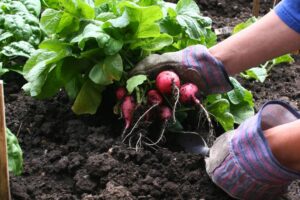
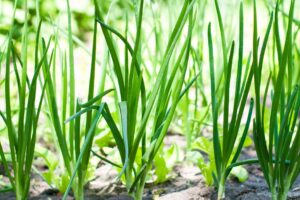
Leave a Reply